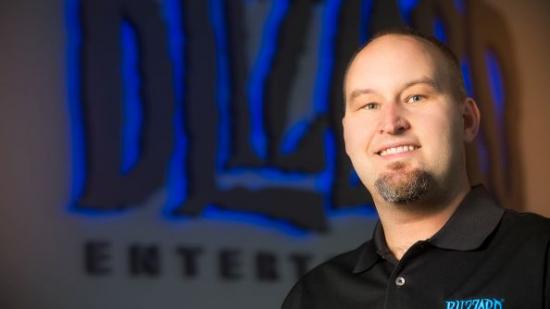Our final interview from the StarCraft 2 WCS Season 3 Grand Finals is with Lead Designer Jason Huck. Along with Chris Sigaty, he was at the event to debut the Legacy of the Void intro cinematic and announce the release date, November 10th. We managed to grab a few minutes to sit down and talk about the difficulties of designing the best RTS campaigns ever, how Legacy is different and whether they’ve tackled the beta in the right way.
Jason’s main area of expertise is the single-player. He’s been working on the game since 2007, designing levels across the trilogy. On Legacy he’s been upgraded to dealing with all manner of other elements – scripting, how the story is integrated and overall balance. I asked him what it was like trying to make a set of missions that could be scaled to such a massive range of player skill, from micro masters to the folks who’ve just learned you can right-click instead of pressing Move each time.
“It’s a lot of work. We spend so much time balancing these missions once we’ve found the base experience we want. We’ll start designing for a normal player and then when we get that to a good feeling, we’ve got all the developers ranging in experience and skill level. We’ll have these people who’ll be in the target range we’re looking for and we’ll take their feedback.”
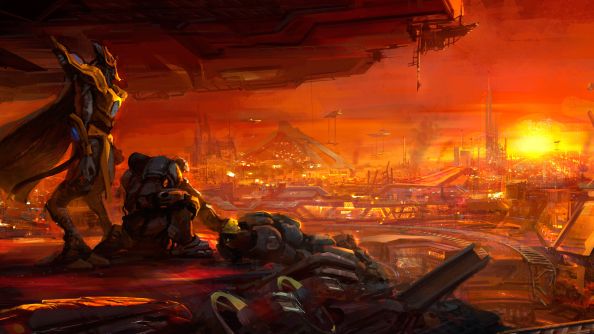
Of the game’s hardest setting, he had a surprising revelation – it’s actually a bit simpler to tune. “When it comes to balancing Brutal, that’s almost easier for us. You mess with a lot of numbers and of course we have plenty of extremely skilled players at Blizzard and we’re like ‘here you play this and tell us what you think.’ It’s kinda funny when they play a mission and say ‘this is frustratingly hard, I can’t beat this.’ We know then we’re close and we just have to dial it back a little bit.”
Then of course, there’s the challenge of maintaining the difficulty across a full campaign stacked with massively different levels. Across 25 Terran missions in Wings of Liberty, plus four more where you play as the Protoss, and the further 20 as Zerg in Heart of the Swarm there isn’t a single one that plays similarly. They often have more deliberate callbacks to classic Brood War missions than resemblance to each other. On Brutal, Wings proved a big challenge, but Swarm was a generally regarded as a little easier. Jason explained why.
“It’s because of Kerrigan. Especially when you get to the skill level of a Brutal player. Just micro one unit? Easy for those players. You micro Kerrigan so well I, as a designer, can’t kill her. The only way I could find, through working on it and balancing Heart of the Swarm, to kill her reliably was three Battlecruisers using Yamato on her at the same time. And it felt soawful. Cause you were just like ‘what am I supposed to do about that?’ You can kill one Battlecruiser with Kinetic Blast but the other two are still going to Yamato her and she’s still going to die.
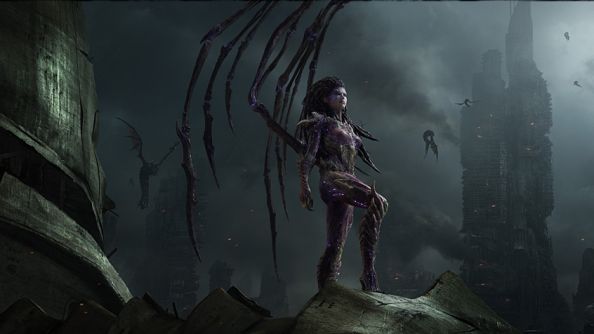
“So it was such a balancing act right there, trying to find [a place] that still felt good and challenging enough, but I always knew in the skilled players hands it was impossible to stop Kerrigan. I mean the hardest missions that people talk about are the ones where we take her away, like the mission where her and Narud have the two laser beams. She’s not there and they’re like ‘that’s the hardest mission’ and I’m like ‘yeah, I wonder why?'”
It’s not like this was all an accident though. “I will say there was a conscious effort on our part to make Swarm a little bit easier than Wings. I always felt like, you know, we really want anyone to buy this game and play it, I don’t want anyone to get to a point in the game where it’s too hard and they turn it off, for whatever skill difficulty you’re at. Any time I experience that in a game I’m like ‘that sucks, I liked this game until I got to the second last mission’ – that’s a crappy experience to me.”
While I personally found Wings of Liberty a really fun challenge, it certainly had some spikes into the unfair category, particularly towards the end. It also had many more permanent choices than Swarm, both in terms of selecting storyline paths for yourself and which units were given permanent upgrades. In Swarm there were still decisions, but they were only ever between how that specific unit could be used, rather than Wings’ method of spending money on tanks meaning you didn’t have it to improve your marines.
So where does that leave Void on the scale? “I think Void is going to end up harder than Swarm, just because you don’t have that godlike unit on your side. Not harder than Wings, probably comparable to it. I mean, you do have the [Protoss flagship] Spear of Adun which gives you some incredible powers. We have all sorts of really game changing abilities in there.”
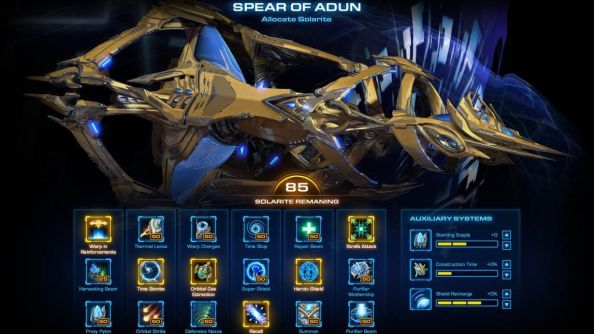
These work as activated effects to drop on the map, letting you bombard enemy forces from space or get yourself some quick reinforcements and resources. “[It’s] to capture the fantasy of the Protoss just arriving at a planet and nuking it from orbit. Like with Mar Sara right back at the beginning of the StarCraft story. This is the most technologically advanced race in the galaxy, these elder aliens with devastating weapons of war.That’s a defining moment for the Protoss: everyone on that planet is dead, what are you gonna do about it? So we want you to have that power in your hands with this system.”
Odd as it is to describe a planet-killer this way, The Spear manages to fit in a comfortable middle-ground. It sits between Wings’ no-strings approach and having an unkillable, uncounterable threat like Kerrigan, who gets to a point where she can attack-move through entire armies. While the Spear will be passively buffing your forces, it will be limited by energy and cooldowns on what effect it can have on the battlefield.
Like in the two previous chapters, you’ll also be able to customise your forces with campaign-only (and very broken) abilities. This comes through the diplomacy element that was originally announced as the central theme of the campaign way back before it was decided they would get a game each, but Blizzard have backed up a little on it since. “It’s less permanent decision making. The factions still exist for the Protoss but it’s reflected more in the army system. So it’s how you’re picking, say, what type of Zealot you want. Similar to the Heart of the Swarm evolution system. So if you choose a Dark Templar Zealot, he can charge through your other units if you have him behind your Stalkers for example, then they’ll stun whatever they hit.”
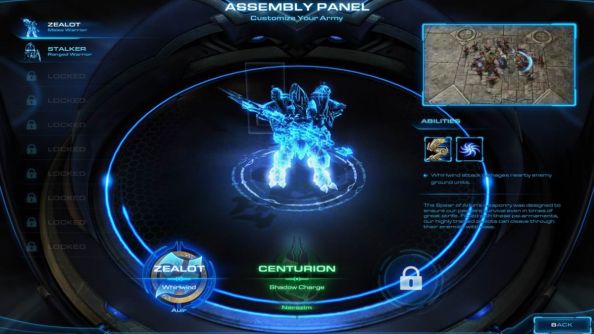
These massive differences between ‘real’ StarCraft and the campaign version have always been a series strength. However, I’d heard an interesting bit of criticism that I put to Jason – some players really just want a mission where they can play regular StarCraft: build up an army, then crush the opponent, with not so many gimmicks. Along with controlling the Hyperion through an asteroid field in a weird solo-mission, they want a couple where they mine some minerals, build some units then attack move an enemy base and watch it all explode.
“That’s a common piece of feedback we get within Blizzard – ‘can’t I just get a mission where I build to 200 supply and steamroll the map?’ And we’re like ‘hmm. Maybe we should do that.’ So in Swarm we did that with a few missions.” Specifically, Jason and his team decided to take some timers out of levels to let players relax a bit. However, they’re being careful not to swing too far the other way, “We wanna find a balance where we don’t have every mission as siege up, build to 200, roll out, but we do wanna have those moments where it’s like no pressure, go ahead, make your deathball. We’ve got to find those [where it’s appropriate] in the campaign and in the co-op missions,people will be able to get that in Legacy.”
On that front, in trying to make Void an appropriate end to the trilogy and StarCraft’s long-running storyline as a whole, I asked about pulling out all the stops. “It’s been a really fun challenge, I think that… there’s so much I wanna talk about but until you’ve played it, it wouldn’t even really be beneficial, you just wouldn’t [know] what I was talking about. It feels like a great ending to me, the way that we’ve melded the story and the gameplay together.
“On our team we have a bunch of artists who made us a bunch of cinematics, so this game has like 30+ in-game cinematics. And the in-game stuff, as time has gone by, they’ve gotten better at making them look good and they’re blending together – some people literally can’t even tell the difference, they have to ask us about them all being rendered and we’re like ‘no, that one was rendered, all the rest weren’t'”
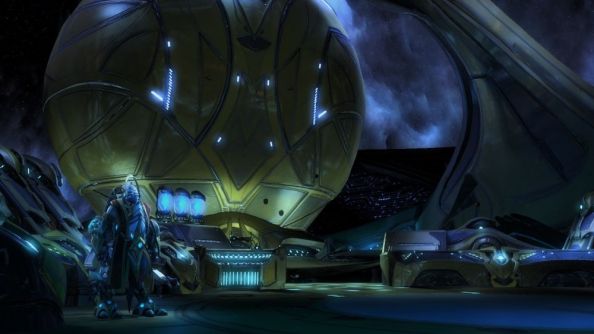
At the moment the single-player team is mostly working out the bugs and applying the last layers of Blizz-polish. Their companions on multiplayer are having a tougher time, still going back and forth on major decisions as release looms. The public perception has been that the competitive side of the game has delayed the release significantly, with an overlong beta stretching far past the point where the campaign was good to go, some even thinking it was finished years ago. Jason said that simply wasn’t true.
“The perception from the community was that everyone was on Heroes and there was no work being done on Void. And the whole time I’m laughing like ‘yeah, really?’ – we couldn’t say anything, there were people we met [at Blizzcon] who ask ‘what are you working on?’ and I tell them I’m on Void and they’re like ‘REALLY?’ – yeah, there’s still work being done here.”
As for the length of the beta, that was deliberate. “The beta – we started it a bit earlier intentionally, that’s probably why it feels like it’s gone on longer. It came down to us being able to plan so far ahead, we said we’d love to get more time [to work on the multiplayer] so let’s start the beta earlier because we’re ready earlier.” Naturally, I wanted to know if they felt they’d used that time effectively, if they’d been brave enough with making big changes or if they’d waited too long?
“Nothing’s set in stone. Even after we ship void, we can still make changes. And we will. There should never be a sense of finality to any of this. We are always going to be evaluating the balance and we’ll always be making the changes we feel are appropriate. We’re still going to want to experiment even after Void ships – maybe it will be a great time to experiment then.”
Does that mean they’ll be willing to make beta-scale changes, big shake ups to the core foundations of the game, even once it’s out there? “Absolutely. We’re trying to engage with the community a lot more with this stuff, get their feedback, get their ideas – so if there’s an awesome idea in there we’ll take it and run with it.”
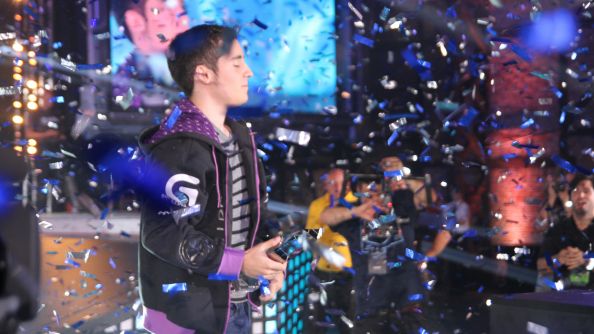
One of the interesting things about the WCS finals themselves is they felt like a send-off for Heart of the Swarm as a whole. The expansion release date was being announced – and was sooner than expected for some – and it was going to be one of the last major tournaments ever played for the game. The transition to Legacy will be immediate, even if it has teething problems. As a send off, I don’t think anyone could have asked for better. I asked if Jason thought Day 1 was the best StarCraft had ever been.
“I think… Yeaaaah… It’s gonna be hard to top that. That turnaround with Lilbow, it was like, I think so many other players would have GG’d there. I think it’s a lesson, look, you can still pull off a win there. There’s still these turning points in this game even when it looks completely one-sided and then it totally turns around on you. That was an amazing thing, an amazing match to watch.”
